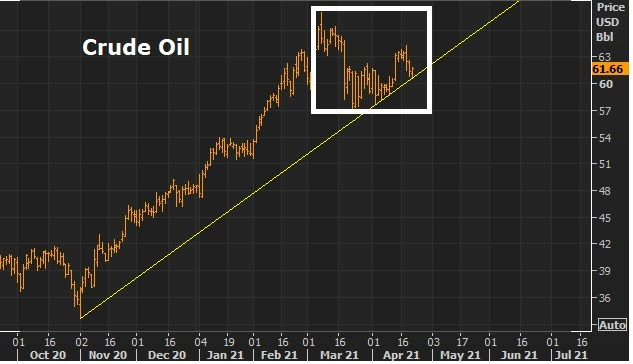May 17, 2021
On Friday, we looked at three key charts as we ended the week.
With the inflationary pressures becoming obvious in the data last week, we looked the well intact trend in broader stocks, the well intact trend in oil prices — both bullish.
And we looked at the ugly chart in the dollar (bearish).
This all supports the coming inflation storm scenario we discussed on Friday.
And we may be seeing clues in today's market behavior that suggest people are waking up to the seriousness of that scenario.
Money is aggressively moving OUT of bitcoin (the antithesis of a "hard asset" preservation of buying power), and INTO gold (the historic battle-tested hard asset preservation of buying power).
And these moves look like they might accelerate from here.
First, here's a look at bitcoin…
 |
|
Bitcoin is off 32% from the highs of just one month ago.
And simultaneously, as bitcoin is breakdown, gold is breaking out … |
 |
|
Gold broke out this morning above the key $1,845 level, on the back of news that the adminstration will be distributing even more direct cash handouts (disguised as child tax credits). I say "disguised," as these payments (also called benefits by the Treasury) will also be disbursed to those that don't pay income taxes. So, this, in addition to the first two tranches of direct payments, is looking more like another step toward universal income.
So, the government continues to up-the-ante on insane deficit spending, despite a developing boom in the economy, with retail sales back above long-term trend, household net worth at record levels, personal savings near record levels, and asset price appreciation in the double-digits. To this point, gold has been the laggard in asset class performance (still down ytd). But with this formula, it may catch up very quickly.
Join my premium service to see how we are positioned to take advantage of the inflation storm — become a member here.
|














